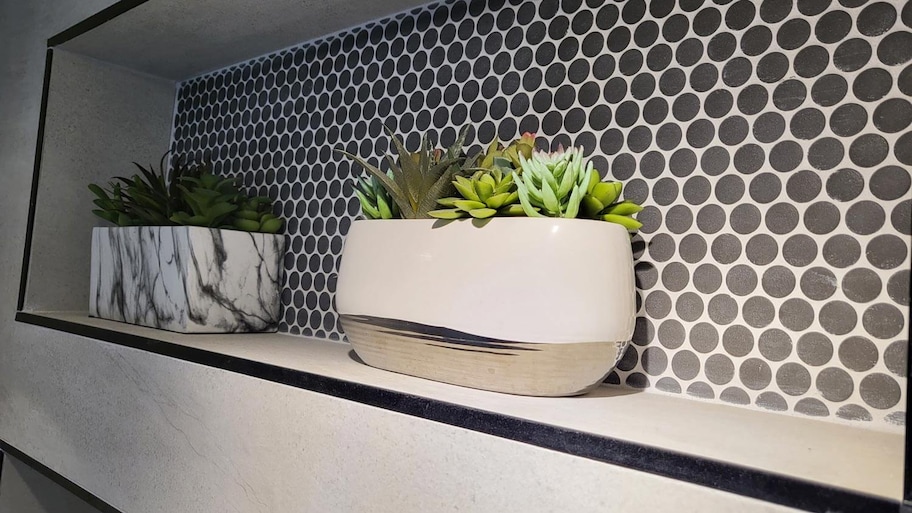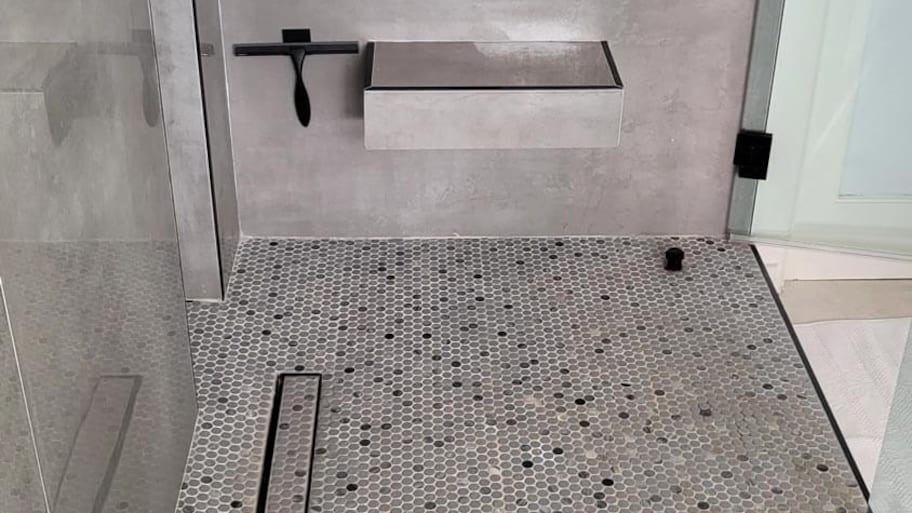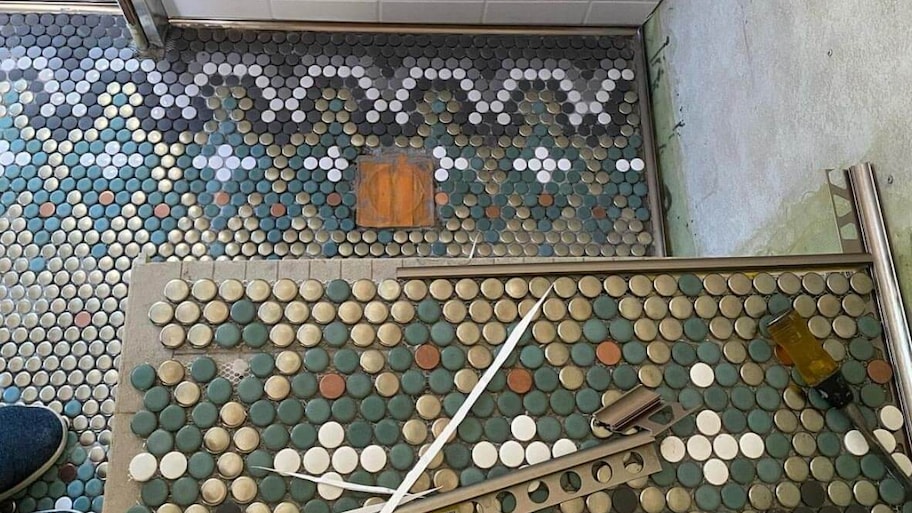The Pros and Cons of Penny Tile: Is It the Right Fit for Your Home?
Who knew small circular tiles could be so chic


Highlights
You can use penny tiles for both traditional or modern spaces.
Penny tiles are versatile, slip resistant, and have a long lifespan.
Penny tiles are harder to maintain and less durable than bigger tiles.
Installation is time-consuming and requires proper design planning.
Penny tiles and their grout lines are harder to clean.
Some design options are timeless and classic, like penny tiles. Even though people were installing these tiles over a century ago, they still have not lost their charm. If you are toying with the idea of using these small but mighty tiles in your home, read on to discover all of the pros and cons of this material. Chances are, it could be exactly what you are looking for to add that extra pop of color or texture to your room.
What Are Penny Tiles?
Penny tiles, sometimes called penny rounds, date back to the early 1900s. But they are not just for your great–great-grandma’s house; these small circular tiles are making a comeback. They get their namesake for typically being three-quarters of an inch in diameter, the same size as a penny.
They come in a variety of materials, colors, and designs, including porcelain, ceramic, and natural stone. Penny tiles are great for kitchen backsplashes, bathroom floors and walls, laundry rooms, accent columns, fireplaces, and more.
Pros of Penny Tiles

To level up your home from OK to wow, you might choose penny tiles for these great reasons.
Design Options
One great thing about penny tiles is that you will have lots of design options to choose from. They are available in sizes ranging from three-quarter-inch to one inch in diameter, and you can choose the best material to fit the aesthetics of your kitchen or bathroom.
One way to customize your penny tile installation is by choosing the right grout color. Since these penny tiles are so small, your grout can either stand out or blend in. You might match your tile and grout colors closely for a streamlined modern look or you could go with contrasting colors for something that pops.
Besides the grout color, you can use different colored penny tiles to make designs. For example, you might create an intricate multicolored pattern or space out a simple geometric design. You can choose a premade mosaic penny tile design or customize the pattern from scratch. Whatever you decide to do, your design choices can help your penny tiles look great in a wide range of homes from traditional to modern.
Long Lifespan
As long as you take good care of penny tile flooring, it should last you a long time. The lifespan of your tile flooring depends largely on the material type you choose. Porcelain tiles last 60 years or longer, ceramic tiles last 75 to 100 years, and stone tiles last 100 years.
Additionally, you should plan on getting your grout resealed every three years. Getting grout sealed costs $1.50 per square foot, on average. This is particularly important for penny tiles compared to other types of tiles, since penny tile flooring has more grout than traditional-sized tiles.
Slip Resistant
You might be wondering, “Can you use penny tiles on the floor?” The good news is yes. Penny tiles offer good slip resistance because they have more grout than other types of tile, which gives you more traction. You can also opt for tiles with anti-slip finishes for even more protection.
The slip resistant nature of these tiles means that installing a penny tile shower floor or a penny tile bathroom floor is not only visually pleasing, but also a practical choice.
Versatile Installation
Small penny tiles offer versatility that larger tiles do not. For example, most flooring requires a perfectly leveled floor for the best results. Although you should always do your best to level a floor before tile installation, penny tiles will be more forgiving on uneven surfaces compared to regular-sized tiles.
Also, the smaller tile sizes mean that it is easier to install tile in uniquely shaped areas, including corners, diagonals, and columns. You will still have to work hard to cut the tiles to size, but it is generally easier to work with penny tiles than the typical 12-inch to 18-inch tiles.
Cons of Penny Tiles
Make sure you are aware of the disadvantages of penny tiles before committing to them.
Hard to Clean and Maintain
Smaller tiles mean more grout, and more grout means more cleaning. You can make this process easier by sealing your grout regularly (at least every three years), which will help to prolong its lifespan. Also, instead of trying to clean grout by hand, you should use steam, especially if you have stone, ceramic, or glass tiles.
Less Durable
Penny tiles are more susceptible to cracks compared to larger tiles, and durability varies according to the material. For example, while glass penny tiles are beautiful to look at, they are not ideal for flooring because they can be slippery and tend to crack more easily. So, if you are looking at glass options, you should first find out the pros and cons of glass tile before making your final decision. For high-traffic flooring, consider other options like porcelain, ceramic, or stone.
Time-Consuming Installation
Compared to other tile types, penny tiles take longer to install and require very precise work to blend all of the seams. Most of all, it takes a lot of grouting to install your penny tiles. So, if you are not into painstakingly precise DIY installation and do not enjoy grouting, you might want to hire a pro tile contractor near you to help you out.
Busy Visuals
Penny tiles add a lot of texture to a room, which can be a good thing if that is what you want. But without proper design and planning, your penny tile floors or walls can become visually overwhelming with too much color and design. Worse yet, your tiles could clash with other elements in the room.
To avoid this, you might opt for penny tile and grout in the same colors; or you might decide to use the penny-tiled area as a focal point and keep the rest of the room design streamlined and simple.
Tips for Installing Penny Tiles

If you have decided on penny tiles for your home, here are some installation tips to keep in mind for a smooth process:
Make a plan for your tile design.
Use a 3/16-inch notched trowel for the grout.
Take your time and focus on smaller areas.
Keep an eye on spacing and minimize seams.
When you are done with the installation, remember to seal the grout before you start using the newly tiled rooms.
